The last play-test of my own home-brewed house rules did not go so well and smooth as I hoped for. Was this test representative for how the rules would work? There was only one thing to do, and that was to use them for another game to see. I sent my miniatures back to Lumbaya again since I hadn't put the setup away yet and have a replay. The outcome was pretty much the same; long playing time and low casualties rates. No new battle report for that game as it just turned out to be a replay of the last.
The rules needed some adjustments to make them more playable in a reasonable amount of time. First I adjusted the D6-value to score hits from 4+ on short ranges and 5+ on long ranges, to 3+ on short ranges and 4+ on long ranges. There are so many other factors that have influence on the hit-probability within these rules anyway.
Secondly I adjusted the probability from 33% to 50% that unsaved hits would cause a 'kill', even thou I vaguely remember that I've read somewhere that during WWII about only 1/3 of hits were lethal. Besides, a saved hit is still a hit, so I suppose the 'kill probability' for hits are still closer to 33%.
Thirdly I increased the 'hypothetical' Rate of Fire, damage potential and the hit probability on heavy weapons by adding another D6 for firing LMGs, HMGs and Mortars as these kind of weapons simply does more damage.
The (updated) rules
The test
The scenario
- Forces:
- Katangese:
- 2 rifle-squads each of 10 soldiers, a LMG and and a bazooka/flame thrower. Each squad can operate as 2 fireteams independently.
- 1 HMG-detachment of 3 soldiers
- 1 sniper
- HQ-section with platoon-leader and 2 medics
- After turn 12: A QRF consisting of 1 truck with a HMG and a section of 10 'veterans' with a LMG and a bazooka arrives from the next village. Only if Lumbaya is still held by Katangese forces.
- UN:
- 1 Platoon of 3 rifle-squads each of 8 soldiers and a LMG. The squads can operate independently.
- 1 Light mortar-detachment of 2 soldiers and an observer
- 1 bazooka-detachment of 3 soldiers
- HQ-section with platoon-leader
- 1 Jeep with HMG and 2 soldiers.
- Katangese: To hold the strongpoint of Lumbaya. Can request QRF-support as mentioned in the force-section from turn 12 if still holding whole or part of the strongpoint.
- UN: To take and hold the strongpoint of Lumbya, preferably within 12 turns, and take control on as many Katangese gendarms located there as possible.
AAR
Pros
- The adjustments as described in the start of this post gave a slightly higher rate of casualties in relation to fire, and really made these rules more playable in a reasonable amount of time.
Cons
- These rules really differs between defending and attacking forces regarding hit-probability; It gives units in fortified and defensive positions, and therefore don't have to move around in the line of fire, a huge advantage over advancing units, which have to use movement and cover to better their odds.
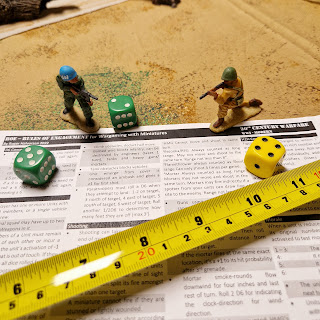


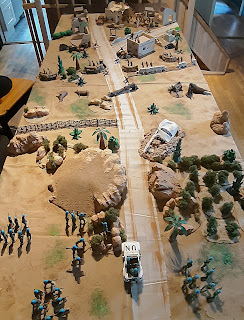
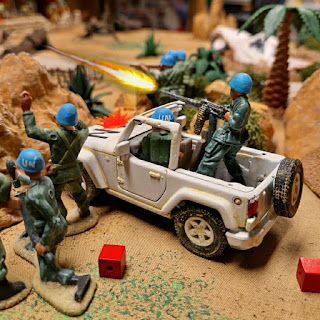
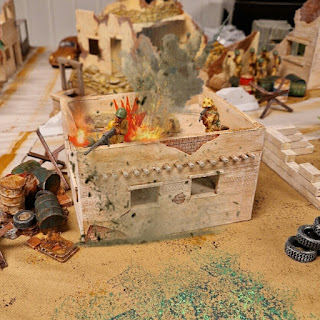

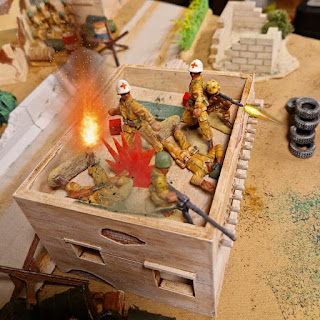
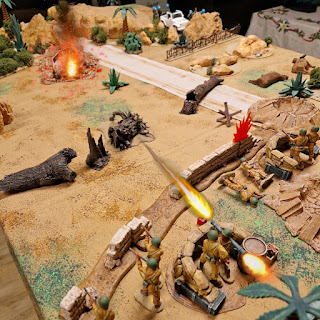




.jpg)






No comments:
Post a Comment